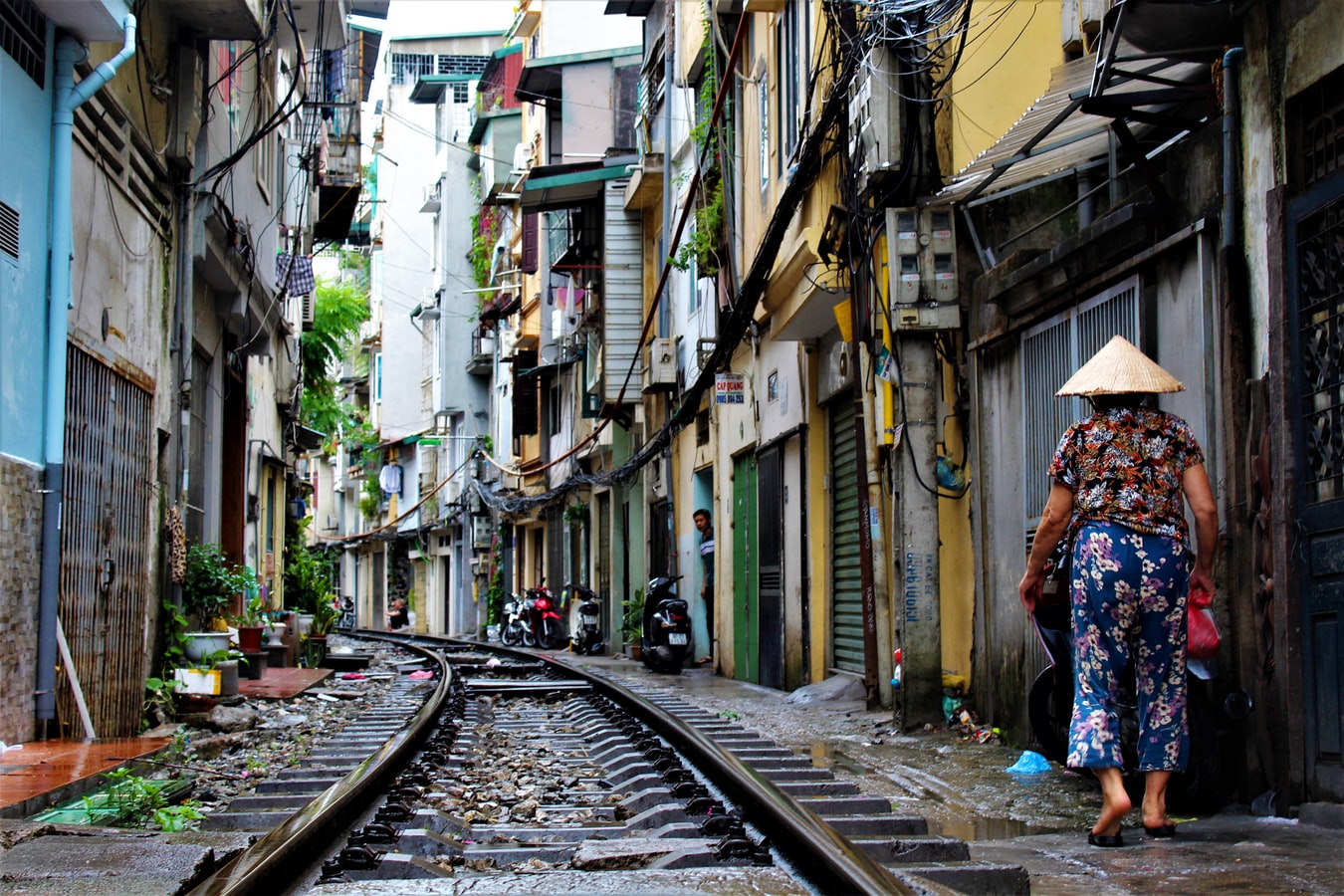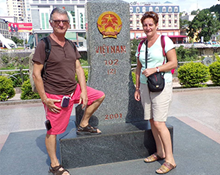- Home
- OUR ITINERARIES
- GUIDEBOOK
- VIETNAM HISTORY
- USEFUL INFORMATIONS
- BEFORE DEPARTURE
- VISIT HA LONG BAY BY SEAPLANE
- MOST BEAUTIFUL BEACHS IN VIETNAM
- GEOGRAPHY & CLIMATE IN VIETNAM
- VIETNAM CULTURE
- NIGHT IN HOMESTAY
- CRUISING IN VIETNAM
- ACCOMMODATION & ADVISES
- BEACH, SNORKELING & DIVING HOLIDAY
- TRAVEL WITH FAMILY
- GOLF
- DOMESTICS FLIGHTS
- OFF THE BEATEN TRACK TOUR
- SITES TO DISCOVER
- ABOUT US
- CUSTOMIZED TOUR
TRANSPORTATION
Traveling the length of Vietnam, from Hanoi to Ho Chi Minh City is simple. Not only are there various airports (about 20!) scattered throughout the country, the bus and train systems are extremely well connected and developed. Choosing the right form of transportation depends on your time, flexibility, budget, and of course, your sense of adventure.
Hop around on domestic flights
Flying might save you time, but it can be a lot more costly than sticking to ground transport. This is especially true if you do not book in advance, because prices can soar. Flying is also a fantastic option if your travel itinerary doesn’t involve beyond the four main stops: Hanoi, Da Nang, Nha Trang, and Ho Chi Minh City.
Connecting these cities and other smaller cities are various carriers: Vietnam Airlines, Jetstar, Vietjet, and Bamboo being among the popular names. From one end to the other end of the country, you’ll probably end up shelling out around 2,000,000 VND ($100 USD) for a budget flight, with premium options costing more. Shorter distances may cost you less, but the prices fluctuate often. During high season times such as Tet (Lunar New Year) when all Vietnamese tend to travel, prices can go much, much higher, even upwards of $250USD for the same Hanoi – Ho Chi Minh City budget flight.
Overall, flying is generally not recommended if you have time because some cities may just steal your heart and you may want to spend longer than you intended. In which case, you might consider sticking to ground transport.
Hop aboard the Reunification Express
Vietnam is served by 1,600 miles of rails and the Reunification Express runs along the spine of the country giving you a glimpse of the slower-paced life, away from the busy cities and their hectic, traffic-congested highways. By taking the train, you will be able to drop by most cities on the coastal route such as Hue, Da Nang, Quy Nhon, Phu Yen, and Nha Trang.

Trains are air-conditioned, safe, and inexpensive. Plus they are a great opportunity to get close with the locals. From Hanoi all the way to Ho Chi Minh City, it will cost you about 1,140,000 VND ($49), and the total journey will take you around 30 hours. There are five different seating options: Hard Seat (chair without cushioning), Soft Seat (chair with plush), Hard Berth (a bed without padding or sheets in a 6-bed compartment), Soft Berth (with padding and sheets in a 4-bed compartment), and VIP cabin for two people.
Remember to book the tickets in advance if you’re looking for a comfortable journey. There are four trains that depart daily from Hanoi and Ho Chi Minh City. During peak season, ticket prices can double and trains can get quite full.
Prop tip: When you’re up in the north and looking to make the journey from Hanoi to Sapa, try a private train company that attaches more luxurious cars to standard trains. There are several companies that do this and the most popular names are Victoria Hotels, Sapaly Train, LiviTrain, and Fanxipan. Although the Victoria carriages are considered the most comfortable, you must be staying at the Victoria Hotel in Sapa to book a spot on its sleepers.
Go even more local…take the night bus!
Getting the overnight intercity bus (aka the Open Tour bus) is perhaps the most popular way to get around Vietnam – it’s easy, cheap, and extremely convenient. The buses have comfortable chairs that recline so far to allow you to sleep on your side. These buses also operate during the night, which is perfect because you won’t be wasting your time on transit during the day.

Taking overnight buses allows you to wake up fresh in a new city. Plus, at just about $10 USD per ride, it’s definitely a bargain. Prices don’t surge by much during peak season – different operators will charge differently, however the bus will still be very much affordable and a fun adventure – especially when you find yourself packed as if in a tin of sardines.
You can do the whole Hanoi to Ho Chi Minh City journey in one go for about 770,000 VND ($33.19). However this is generally not recommended as it is definitely better to split into various legs, despite it costing you more. You can buy an open ticket that allows you to get on and off this Hanoi – HCMC route, but we’d recommend you keep your options flexible by simply purchasing individual tickets as you go.
When you book your tickets, make sure to do so from a reputable company such as The Sinh Tourist, Phuong Nam, and Futa Bus. Other companies may, unfortunately, try to scam you, so stick to the ones that have made a name for themselves over the years.
Put your helmet on and go for a drive
The most adventurous way to explore Vietnam? Rent a motorbike and drive.
This is extremely freeing and gives you all the flexibility you need. You can take roads less traveled and really get to know the authentic and rural Vietnam. You’ll get to enjoy sceneries you may otherwise pass without knowing, and if you’re on a bike, you can stop and really revel in what you see. You’ll get to meet all kinds of locals and maybe even dine with them or spend the night in their extra guest bedroom.

Plus, once you get to each city in your itinerary, having your own set of wheels really does make a world of a difference. Luckily, renting a motorbike is easy in Vietnam and is also quite cheap. It will cost you around $3 – $5 USD per day, and an additional $1.5 USD for gas. You can find bike shops scattered around towns, or just ask your hotel reception to arrange one for you.
The downside of traversing across the country on your bike is that it does take time and you will spend a huge chunk of your time in transit, better spent exploring cities and its people. Plus, if you’re doing the driving then you will need to make plenty of stops to rest your butt.
If you do wish to still ride a bike, please only do so if you are already very experienced. Road safety in Vietnam isn’t really paid attention to and accidents happen, just like anywhere else. Wear your helmet, and remember to get insurance!
If you’re thinking of renting a car and driving, you should know that this is a rare sight in Vietnam. Car rental agencies don’t allow foreign tourists to drive themselves in Vietnam so you’ll have to rent it with a driver. Hiring a driver with a minibus is also an option – especially if you’re traveling with family or a large group where you can split the cost. Prices vary greatly depending on which city you’re at and which company you’re renting from but expect to pay over $50 USD per day.
Boats are an option too.. sort of
While you can not travel down (or up) the entire length of Vietnam by boat, you can still enjoy certain cities this way – for example some of the coastal towns, the magnificent Ha Long Bay, or the peaceful Mekong Delta. Don’t miss out on a boat cruise when in Ha Long Bay, floating between karst formations and stopping to explore a cave or do some kayaking. It will be an adventure of a lifetime!

A boat cruise around Ha Long Bay could cost you from $40 – $500 USD, depending on whether you choose to stay overnight and of course the cruise itself.
How about getting around in the cities themselves?
Once you reach cities, you have various methods of getting around as well, apart from on your feet. Cyclos, or bicycle rickshaws, are available in many towns. Unfortunately, they are getting banned in the more congested cities. A faster alternative is a xe om, better known as motorbike taxi. These guys don’t don any particular uniform so you can keep an eye out for one, but you’ll often see them parked in corners in groups. When you pass by, they will ask “motorbike?”
Taxis are also available in major cities and during times of high demand, drivers may be reluctant to use meters. We recommend you stick to popular brands such as Vinasun or MaiLinh. Another option is to download the ride-hailing app Grab or Go Viet, the Asian equivalents of Uber.
The transport options here are often much cheaper, and you have the option of hailing a bike as well. If you want to be super local, try the buses. However, you’ll have to be flexible enough to know that you’ll make mistakes, take the wrong route or get off at the wrong stop. Buses are also barely ever on time. Use the local bus map app to support you on that adventure.
Informations
GUIDEBOOK
AVANT LE DEPARTAdd: Quat Dong, Thuong Tin, Ha Noi INTERNATIONAL TOURISM LICENSE
Tel / whatsapp : +84 976 255 369 No : 01-1157/2018/ TCDL-LHQT
ZEN VIETNAM TRAVEL, A Branch of Thuong Tin Tourist
© Copyright from ZEN VIETNAM TRAVEL










